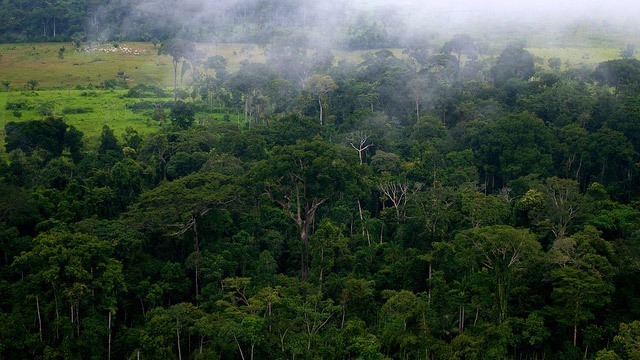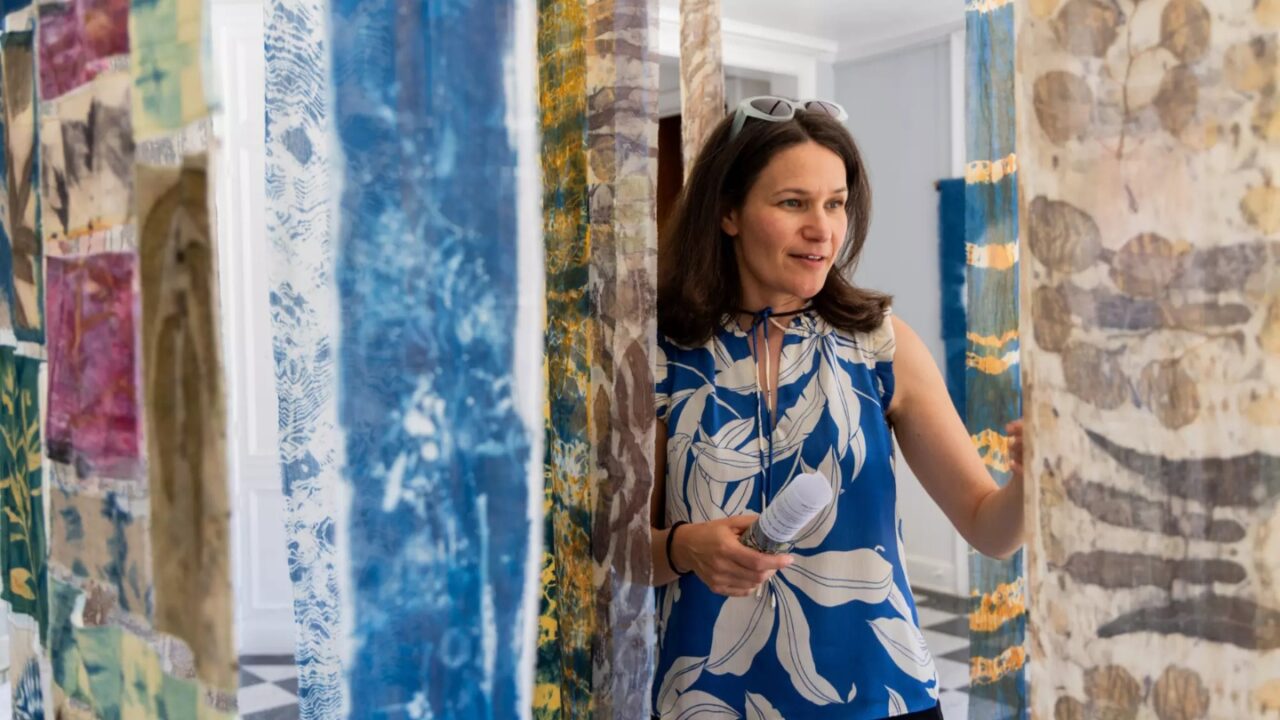
‘Bending the Curve’: Can We Flat-Line Global Warming by 2050?
A New Report from 50 University of California System Researchers Shows How
Can global warming really be stopped? A new report from 50 researchers and scholars from across the University of California system says yes — in part by using scalable lessons learned from the system’s own pledge to go carbon-neutral by 2025.
The report — “Bending the Curve” — offers 10 solutions to “bend the curve” of increasing global greenhouse gas emissions. Jon Christensen, adjunct assistant professor and journalist-in-residence at UCLA’s Institute of the Environment and Sustainability, served as the report’s senior editor. We asked Christensen why the report might make a difference.
Q: There have been hundreds of reports and conferences on climate change. What makes this one different?
JON CHRISTENSEN: First, the 50 authors who contributed to this report came from a wide range of disciplines from around the University of California system, not just climate science. As a result, the solutions that the report offers for curbing climate change are not just scientific and technological, they also focus on economics, behavioral changes, communication, and education. It puts soft solutions —especially communication — on an equal footing with hard solutions such as better batteries for storing renewable energy.
Second, the report synthesizes what we’ve learned over the past several decades scientifically into 10 scalable solutions that can bend the upward curve of carbon emissions and global warming by 2050. It’s got a positive, pragmatic message based on our experiences here in California. If these solutions are implemented, we could realistically flat-line that rising curve of emissions globally sometime around 2050, and begin bringing total greenhouse gases in the atmosphere down after that.
Q: The report stresses a factor for global warming that might seem odd to many people: soot. Explain.
JON CHRISTENSEN: Soot might sound mundane, but it’s incredibly important. Soot is the most visible carbon pollutant. It is composed of the particles emitted in burning fossil fuels. It is called a short-lived climate pollutant because these particles don’t persist in the atmosphere nearly as long as carbon dioxide, which can stay in the atmosphere for hundreds to thousands of years. But it has the biggest impact on human health.
So if we attack soot, we achieve two goals at once, benefiting human health and lowering the carbon emitted. This also buys us more time for long-term solutions. The bottom line is that we have all the tools we need to do what needs to be done to tackle short-term issues such as soot between now and 2030, but we do have to invest in new and improved technologies to tackle longer-term challenges and take us from 2030 to 2050.
Q: What is the UC Carbon Neutrality Initiative, and how is it connected to the report’s 10 solutions for bending the curve of carbon emissions and global warming?
JON CHRISTENSEN: Two years ago, Janet Napolitano, the president of the University of California, pledged that the UC system would become carbon neutral by 2025. That’s a hugely ambitious goal. It commits all 10 campuses and two national laboratories, and tens of thousands of students, faculty, and staff, to taking concrete steps to reduce our carbon footprint now and bring it down to net-zero within 10 years.
The pledge is an inspiration for our report. If we can do it here, do we have solutions that can be scaled up for the rest of the country and the world?
There are two other inspirations for our report. One is right here in Los Angeles, which has been so visibly successful in cleaning up its air over the past several decades that Chinese officials are now visiting us to learn how to do the same in their cities by tackling soot as well as other, less visible pollutants.
The other inspiration is the state of California, which has become a global leader in setting smart climate policies that use regulations as well as market-based solutions that are steadily ratcheting down our emissions of greenhouse gases, while our economy continues to thrive.
Q: If California were a country, it would have the eighth largest economy in the world. Can California really be an example for the world? Particularly for poorer countries?
JON CHRISTENSEN: California is already an example for the world, particularly at a time when the United States has not been a particularly inspiring leader on the world stage. Governor Jerry Brown has really pushed forward an example for subnational units—states, provinces, regions, and cities—to take the lead on climate solutions at a time when global agreements have faltered and floundered.
Perhaps national and global leadership will reassert itself, particularly at the upcoming global climate summit in Paris later this fall. There are some promising signs. And Pope Francis certainly contributed a powerful example of global leadership with his encyclical on the environment earlier this year, which very explicitly tied climate change and climate solutions to equity, social justice, and fairness.
But while not everything California does can be directly translated to other places, some of what we are doing here can be adapted and scaled — particularly blending command-and-control regulations on pollutants such as soot with market-based incentives (such as our cap-and-trade system) to steadily lower carbon dioxide emissions.
And across the UC system, researchers are also working on solutions for poorer regions of the world with collaborators in those regions and identifying solutions. One example: Adapting and scaling indigenous sustainable forest management practices that already benefit the whole world by capturing and storing carbon.
Q: In the end, though, isn’t this report just destined to join the long dusty shelf of other well-intentioned reports on climate change?
JON CHRISTENSEN: Definitely not. The report has been embraced by Governor Jerry Brown and President Janet Napolitano. So it is already becoming part of how we think about the future here in the UC system and the state of California. And several of the co-authors are taking the report to Paris to share our 10 scalable solutions with the world.
The UC Climate Neutrality Initiative also means that all of us in the UC system, students, faculty, and staff, will have to learn how to make practical adjustments in the way we do things day-to-day to lower our carbon footprint to zero over the next 10 years. Simple things like turning off computers when we’re not using them, switching to LED lights, lowering heating and air-conditioning, biking to school, eating more meatless meals, participating remotely in meetings. All of these, by the way, are part of the “Cool Campus Challenge” underway right now across all 10 UC campuses.
We know from research on communication and climate change that two keys to success are reaching people where they are, close to home, and in ways that fit with their own ideas about themselves. The other key is lowering the barrier to action, showing people that there are concrete steps they can take in their own lives and that we can take together. Doing so brings climate change down from a big, scary problem that most of us can do nothing about to something that we can actually work on.
That’s a lesson the world needs. It’s also one that will be integrated into our teaching. The report is slated to become the basis for a textbook that will be used in classrooms across the UC system and beyond.
So the knowledge in this report and the 10 scalable solutions will most definitely have a life beyond its digital publication in a new open access, peer-reviewed journal published by the University of California Press next spring. The dusty shelf is a dusty metaphor these days. But this report will not be lost and forgotten online either. It will have a long and productive after-life.
Want to learn more about “Bending the Curve? Read Jon Christensen’s new piece on The Conversation.



